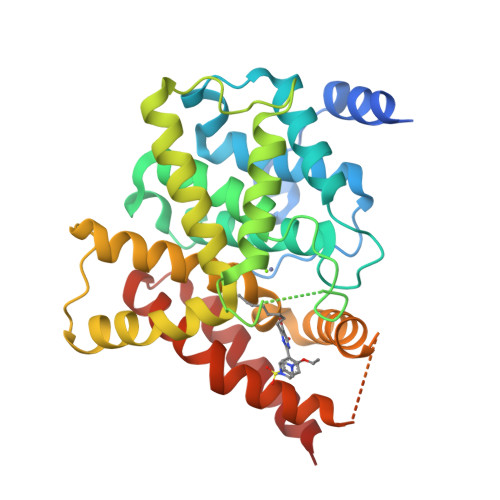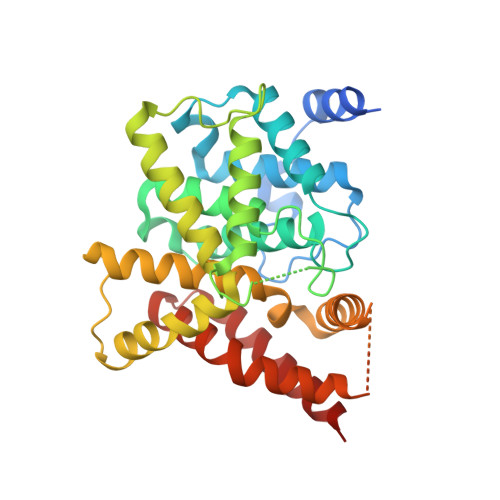Exploration of the 5-bromopyrimidin-4(3H)-ones as potent inhibitors of PDE5.
Gong, X., Wang, G., Ren, J., Liu, Z., Wang, Z., Chen, T., Yang, X., Jiang, X., Shen, J., Jiang, H., Aisa, H.A., Xu, Y., Li, J.(2013) Bioorg Med Chem Lett 23: 4944-4947
- PubMed: 23867165
- DOI: https://doi.org/10.1016/j.bmcl.2013.06.062
- Primary Citation of Related Structures:
4I9Z, 4IA0 - PubMed Abstract:
The substituents both at the 6-position of the 5-bromopyrimidinone ring and at the 5'-position of the phenyl ring of 5-bromopyrimidin-4(3H)-ones were explored. 5-Bromo-6-isopropyl-2-(2-propoxy-phenyl)pyrimidin-4(3H)-one was identified as a new scaffold for potent PDE5 inhibitors. The crystal structures of PDE5/2e and PDE5/10a complexes provided a structural basis for the inhibition of 5-bromopyrimidinones to PDE5. In addition, it was also found that there is a great tolerance for the substitution at the 5'-position of the phenyl ring of 5-bormopyrimidinones and the resulted compound 13a has the highest inhibition activity to PDE5 (IC50, 1.7 nM).
Organizational Affiliation:
Key Laboratory of Xinjiang Indigenous Medicinal Plants Resource Utilization, Xinjiang Technical Institute of Physics and Chemistry, Chinese Academy of Sciences, Urumiqi 830011, China.





















